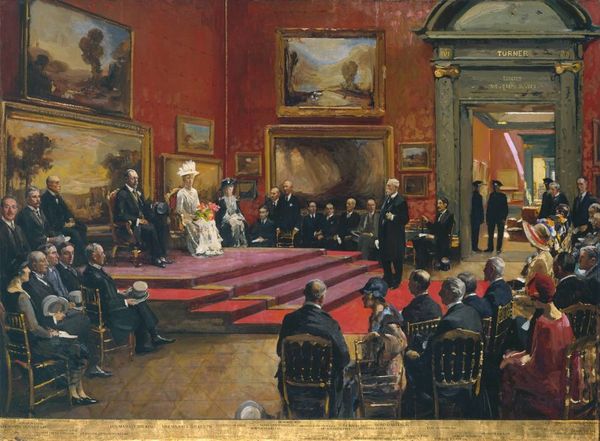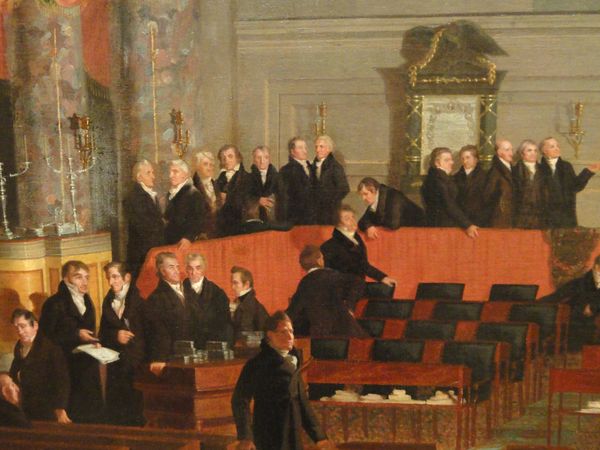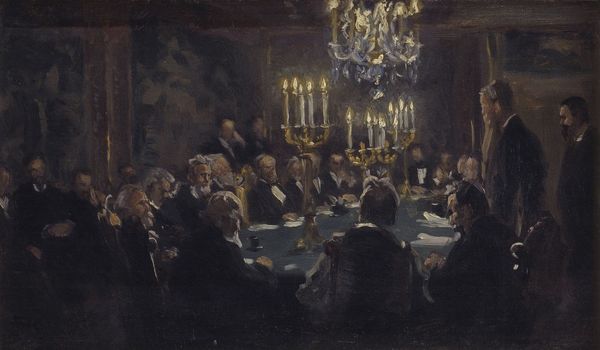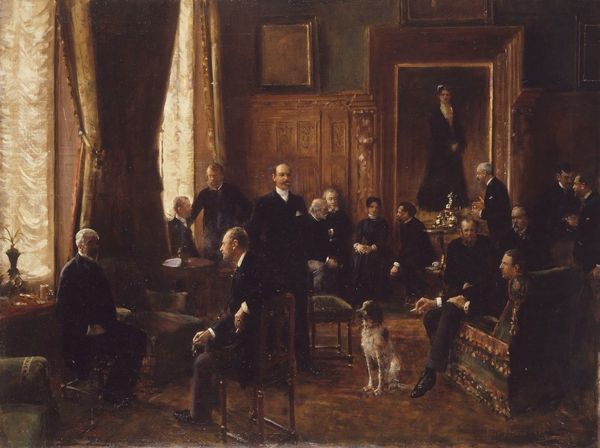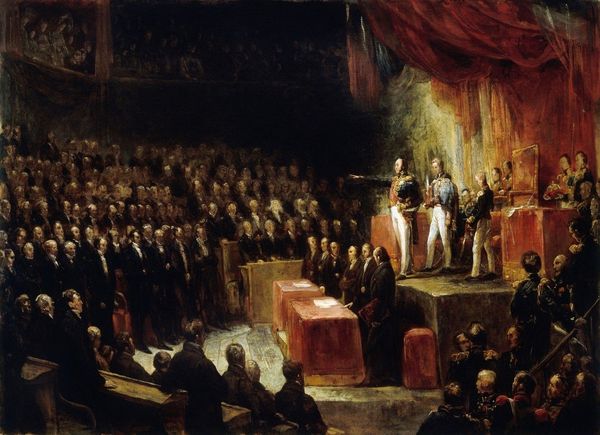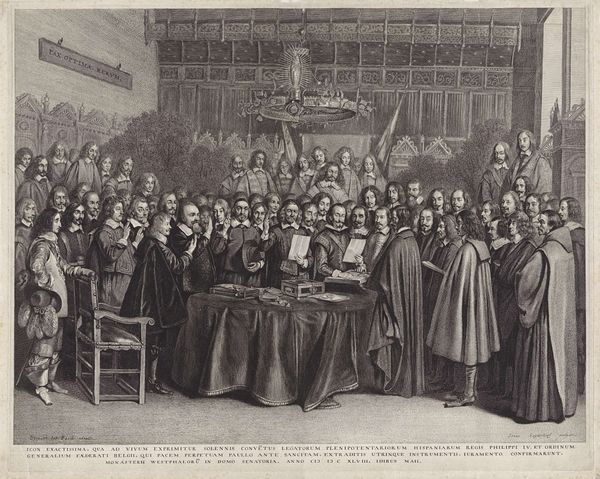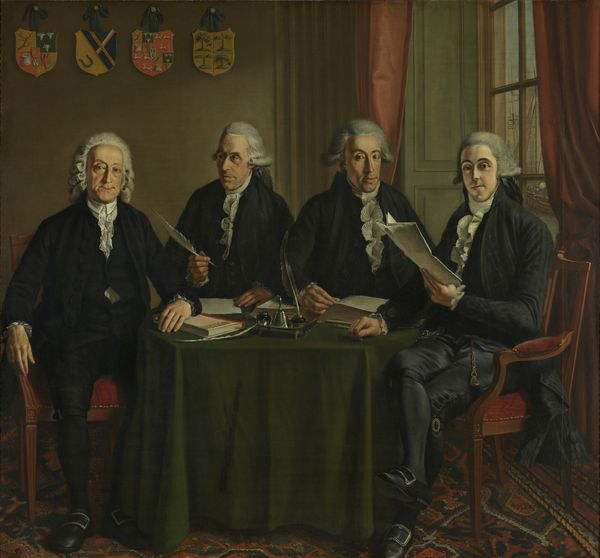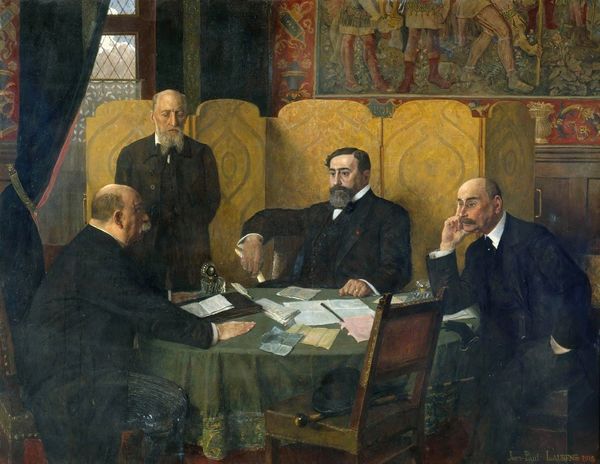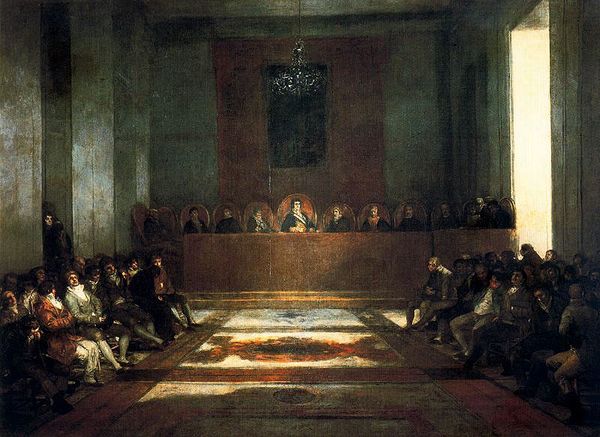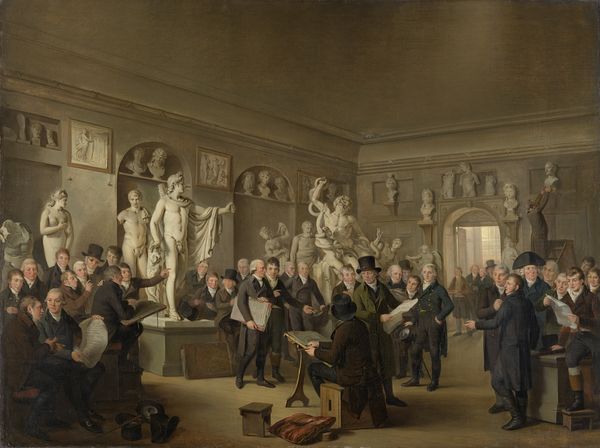
Copyright: Public domain
Curator: Standing before us is Theodor Aman's 1861 painting, "Proclaiming the Union," a vivid depiction rendered in oil paint that captures a pivotal moment in Romanian history. Editor: It’s certainly bustling. What immediately strikes me is how this intense aggregation of figures manages to create a space throbbing with something akin to a fever dream of political will. It also reveals that such historic events require the tailor and barber to work overtime on such ensembles! Curator: Indeed. The meticulous detail in the attire hints at the seriousness of the event. Aman, though, does something special here, moving past straightforward documentation into a kind of poetic license, no? Think of the flags that stand like spears. Editor: You know, looking closer, what fascinates me is how the cloth signifies status, even in the face of revolution. This assembly would have been keenly aware of the fabrics, dyes, and cuts that communicated power, influence, and access. I suspect the material choices alone could tell the history of social climbing! Curator: Absolutely. And beyond mere representation, I get the feeling that Aman wanted the work itself to participate in nation-building, using it to inspire patriotic sentiments at a moment of huge upheaval. Does the rather constrained palette perhaps also echo this sombre commitment? Editor: A very astute point! Consider the availability of pigments then, and the logistics of applying them en masse, in a country wrestling to define itself. Paint wasn't simply a medium but a precious resource, laden with import taxes, reflective of the nation's ability to trade, to literally paint its own destiny! It also serves to highlight those touches of red in what appear to be parliamentary documents on the table. Curator: Precisely. Those small areas carry tremendous weight amidst a wash of beiges and blacks! When I view it, I see much beyond the official narrative and glimpse something raw and fundamentally hopeful in its very production, doesn’t it reveal Aman’s own desires, his participation, and how one could believe? Editor: Well said, and perhaps this materiality offers insights beyond the celebratory surface—showing that even revolutionary acts are wrought with earthly concerns about resources, skill, labor, and access. Curator: Yes, from this new vantage, one might view such historic acts in painting as collaborative effort; an endeavor with political vision intertwined within canvas, paints, and craft—I truly appreciate it anew now.
Comments
No comments
Be the first to comment and join the conversation on the ultimate creative platform.
